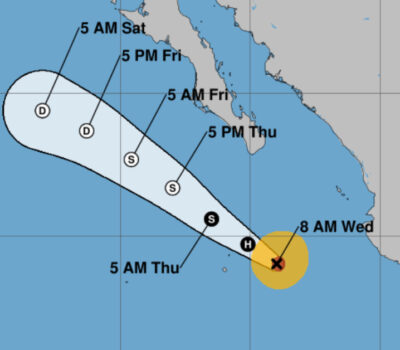Mexico is among the world’s top oil producers, but it’s seen oil production hobbled over the past decade, thanks to a need for investment and expertise. By this summer, approval of legislation tied to the country’s energy reform could help change the landscape for Mexico’s energy sector.
As Mexican congressman Javier Treviño recently stated, Mexico’s energy reform is “historic, real, and transformational.” The reform breaks up a state monopoly over energy in Mexico that has existed for more than 75 years. Currently, Petróleos Mexicanos, or Pemex, the state oil company, runs all oil and gas production. In other words, Pemex is the sole exploration and production company; all gas stations in Mexico carry the Pemex brand. Similarly, the Federal Electricity Commission, or CFE, is a state-owned entity that controls all electricity generation and distribution. Pemex and CFE operate as government bodies, not productive enterprises.
The reform would bring in private and international companies to invest in oil and gas and electricity generation, which would increase energy production and contribute one percentage point of GDP by 2018, according to some estimates. U.S. companies could bring their technology and capital to projects in Mexico, generating jobs and profits for both Mexico and the United States. In 2012, the U.S. Energy Information Administration ranked Mexico’s oil sector as the ninth largest in the world.
Given the economic benefits of reform, why did it take so long for Mexico to take this step? The reforms have been controversial in Mexico, due to the history of President Lázaro Cárdenas’ 1938 nationalization of the oil industry, which is enshrined in the constitution. Mexicans have traditionally seen the national ownership of oil as a symbol of national pride. However, the opposite is also true – many Mexicans see the need for increased investment and production and the reform of Pemex. While public opinion is shifting toward supporting reform, there is still a robust debate within Mexico on the subject.
President Enrique Peña Nieto announced the reform package in August 2013, Congress passed the reform in December, and then a majority of 31 state legislatures approved it. Currently, Congress is debating the secondary legislation, a package of 21 laws that govern the nuts and bolts of how the reform will be implemented. Legislators are set to conclude the debate on June 23 and plan to vote on the reform before the end of the month, though the debate may extend further depending on talks between the three parties. Following the passage of this legislation, the Mexican government will hold its first auctions starting in 2015, when private companies may bid on prospective fields.
Several Mexican presidents have attempted energy reform, only to be blocked by opposition in Congress. Peña Nieto, of the governing Institutional Revolutionary Party, was able to get the reform package through Congress in part because of a pact negotiated with the two main opposition parties: the National Action Party on the right and the Party of the Democratic Revolution on the left. The three pledged to work together to pass a sweeping reform agenda, which included energy.
Unfortunately, the pact broke down during the energy reform talks and now the Party of the Democratic Revolution would like to block the reform by means of a popular consultation, which they hope to launch next year. With the momentum surrounding the reform, it is unlikely that the effort will succeed. Still, legislators from that party have accused the other two of holding the debate during the World Cup in order to push the legislation through without opposition.
Mexico’s oil sector is crucial to the country’s economy. In 2013, oil revenue funded 34 percent of the national budget, and, in the last quarter of the year, 50 percent of Pemex’s revenue ($16 billion) was paid in taxes to the government. However, the reform will reduce those figures since Pemex’s tax burden will be lowered. Moreover, the Finance Ministry has traditionally overseen Pemex’s budget, but this oversight will be eliminated.
Mexico’s oil sector is also vital for the United States. Mexico is the third-largest exporter of petroleum to the United States after Canada and Saudi Arabia, representing 10 percent of U.S. imports. Nevertheless, Mexico’s production has declined from 3.4 million barrels per day in 2004 to 2.5 million barrels in 2014, indicating that investment is sorely needed. Mexico lacks technology for deepwater drilling in the Gulf of Mexico and in shale gas. Private companies, including from the United States, will be able to provide know-how and best practices in these areas. International companies will enter into joint ventures with Pemex, which benefit both sides.
The rapidity and scope of the reforms demonstrate that Mexico is treading new ground. Because of the broader reform agenda, the country is enjoying rave reviews abroad. However, there is still much work to be done. Human capital is deficient and Mexico needs to invest in higher education to fill the positions that will open in Mexico’s new energy sector. The implementation, however, is the key in evaluating their lasting success.
Written by Christian Gómez, Jr. director of energy at the Council of the Americas, where he runs the council’s Energy Action Group. Follow him on Twitter: @CGomezEnergy.
Mexico is among the world’s top oil producers, but it’s seen oil production hobbled over the past decade, thanks to a need for . . .











